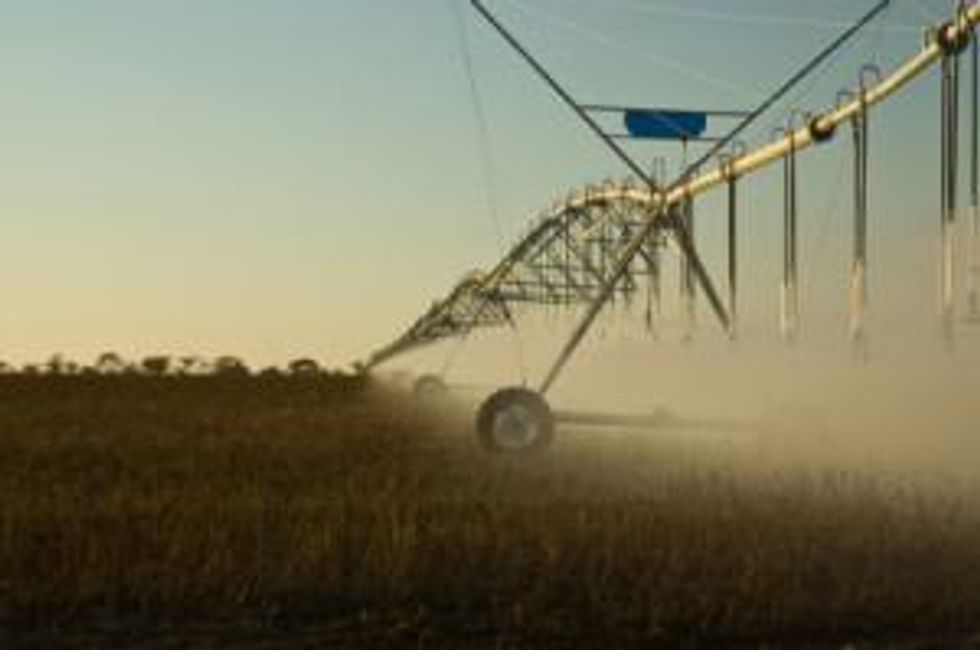Recent delayed potash contracts with India have left markets looking elsewhere for support. Could Brazil be the answer?
Potash markets have weakened in the past month due in great part to underwhelming demand from Indian and Chinese markets. However, agricultural market indicators suggest the year may finish strongly.
After a strong spring driven by record North American plantings, limited international demand is causing build up in potash stockpiles.
India in particular has been a point of weakness for the market as a whole, as it has been oversupplied with potash fertilizer carried over from previous contracts with Russian and Canadian producers.
Agrium (TSX:AGU,NYSE:AGU) CEO Mike Wilson recently told Reuters that growing potash stock levels are “reflecting India not pulling [potash]” at the previously-expected level. North American potassium chloride inventories climbed to 3 million tonnes in May, up 3.9 percent from April and up 43 percent from the five-year average, according to PotashCorp (TSX:POT,NYSE:POT) data.
Wilson continued, saying that “[o]nce India starts to pull, and assuming we settle with China, everything should be fine.”
Uralkali (LSE:URKA) CEO Vladislav Baumgertner noted that his company is also waiting on renewed Indian demand, but said he believes that Indian contracts will be negotiated no later than August.
Not all agree. Indian fertilizer secretary Ajay Bhattacharya recently commented that India “will not go for potash imports till September as companies have sufficient stock to meet the Kharif [winter] requirements.”
Soft demand for potash in the United States has also led PotashCorp to cut its summer warehouse potash prices to levels 9 percent below company prices a year ago. Prices for granular potash were between US$510 and $520 starting on June 11 and will continue at this level until July 21.
World weather woes
Heat waves are making agricultural markets dizzy after recent forecasts predicted hot and dry conditions for much of the US midwestern agricultural belt. December 2012 corn prices surged 6.6 percent as analysts downgraded US corn crop health ratings below market expectations this week.
Russia, a key exporter of wheat, is also experiencing dryness, with Southern Ukraine and Southern Russia remaining “desperately dry” according to Paris-based consultancy Agritel.
Grain crops in Russia’s Rostov region may fall by more than 25 percent compared to last year’s harvest, according to the area’s farm minister. Recent droughts in the area have also driven wheat prices higher in both Russia and the Ukraine, by 40 and 19 percent respectively.
Extensive spring planting of North American crops this year was brought on by damaging weather and record crop shortages in 2011. Canadian fertilizer sales boomed in April, with exports of fertilizers and fertilizer materials increasing by 51.8 percent.
Brazil the “redeemer”?
One area of positivity for potash markets is Brazil’s recent subtle recovery after months of severe flooding ravaged the country’s soy and sugar crops.
Uralkali recently said that it is looking to Brazilian potash demand to buoy potash market sentiment as the country is beginning to show signs of “very strong demand.” A recent sale of 150,000 tonnes of potash at US$550 to $560 per tonne by Belarusian Potash Company was given as evidence of this claim.
While it is difficult to compare prices for Brazilian contracts settled on spot markets with earlier discounted contract settlements reached with China, the price of the contract illustrates a positive sentiment for Brazilian fertilizer demand.
Soybeans, a key export for Brazil, may reach record planting levels next season as farmers in Brazil are expected to plant 26.4 million hectares for the 2012 to 2013 season, 5.4 percent more than the 2011 to 2012 season.
Brazil’s agriculture sector shrank by 8.5 percent in the first quarter compared to 2011, due in great part to reduced soybean exports. That led to the slowest GDP growth seen in Brazil in two years.
Playing host to the current UN Conference on Sustainable Development, Brazil and Latin America are positioned to become critical players in the agricultural markets over the coming years.
“Asia’s weight in regard to global growth is progressively declining, while Latin America is seen as reinforcing its position as an engine of future expansion” the International Fertilizer Association said in recent report.
Securities Disclosure: I, James Wellstead, hold no direct investment interest in any company or resource mentioned in this article.
